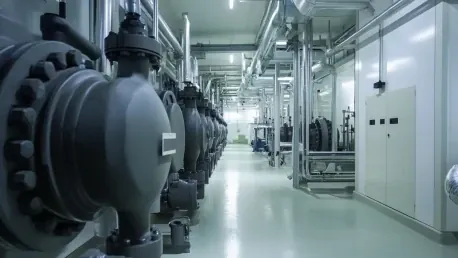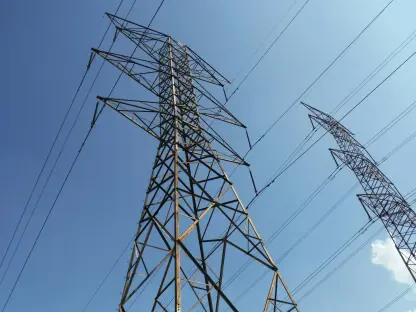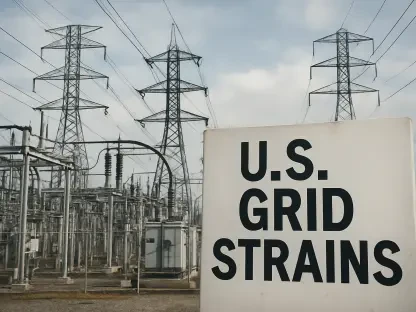In the quest to meet stringent environmental regulations, wastewater treatment plants (WwTPs) are constantly seeking innovative solutions. One such promising technology is the Flocell XFM40 modular filtration system, which has shown remarkable results in a recent trial at a rural WwTP in England. This article delves into the trial’s findings and explores the potential of modular filtration systems in addressing phosphorus compliance challenges. The implications of successfully implementing this technology could lead to improved water quality and compliance with stricter regulatory standards.
The Challenge of Phosphorus Compliance
Phosphorus is a key nutrient that, in excess, can lead to eutrophication in water bodies, causing harmful algal blooms and deteriorating water quality. Regulatory bodies are tightening phosphorus discharge limits, with the upcoming AMP8 regulatory period in the UK setting a challenging consent limit of 0.25 mg/l. For many WwTPs, especially those in rural areas, meeting these stringent requirements is a significant challenge. This elevated challenge underscores the need for advanced and effective methods of phosphorus removal in wastewater treatment processes.
The rural WwTP in England where the trial was conducted faced considerable difficulties in achieving the anticipated phosphorus consent limit. Traditional treatment methods proved inadequate, necessitating the exploration of innovative solutions. This is where the Flocell XFM40 modular filtration system came into play, offering a potential breakthrough in phosphorus removal. As regulatory pressures intensify, the adoption of such advanced technologies becomes a crucial step for WwTPs striving to meet compliance and safeguard water quality.
Collaborative Efforts and Technological Adaptation
The success of the Flocell XFM40 trial was the result of a collaborative effort among WCS Environmental Engineering (WCSEE), Evolution Aqua, and a UK water utility. Originally designed for koi carp ponds, the Flocell XFM40 was adapted to meet the more demanding requirements of wastewater treatment. This adaptation involved rigorous testing and modifications to ensure the system’s effectiveness in a WwTP environment. As the collaboration progressed, the expertise of each partner played a vital role in tailoring the technology to suit wastewater applications.
The collaboration between WCSEE and Evolution Aqua underscores the importance of partnerships in driving innovation. By leveraging their expertise in aquatic filtration, Evolution Aqua was able to contribute valuable insights to the development of the Flocell XFM40 for wastewater applications. This synergy between specialized firms and utilities is a key factor in the successful implementation of advanced treatment technologies. The blend of aquatic filtration technology and wastewater treatment experience created a solution capable of addressing pressing phosphorus compliance issues.
Trial Setup and Testing Procedures
The trial involved the installation of one Flocell XFM40 unit, equipped with eight modular filters, in a 40-foot container at the WwTP. The system was designed to handle up to 40 liters per second of flow, providing the flexibility needed for rigorous testing at different flow rates. Over the course of 12 weeks, extensive testing was conducted, including particle size and thermogravimetric total suspended solids (TSS) analysis. This comprehensive approach ensured that the data collected was robust and reflective of the system’s performance in varied conditions.
More than 1,000 samples were collected during the trial to ensure robust data. This comprehensive testing approach was crucial in validating the system’s performance and identifying any potential issues. The results were impressive, with the Flocell XFM40 achieving phosphorus levels as low as 0.04 mg/l, far exceeding the target of 0.25 mg/l. The successful trial demonstrated the system’s ability to meet and exceed regulatory requirements, making it a viable solution for similar challenges in other WwTPs.
Operational Efficiency and Environmental Impact
One of the standout features of the Flocell XFM40 is its operational efficiency. The system uses an open-cell media to filter tertiary solids and manage difficult-to-handle flocs, resulting in significant phosphorus reduction without increasing filter pressure or decreasing flow rates. This efficiency is complemented by the system’s compact and modular design, which allows for easy installation and operation. Operators could be trained quickly, making the system user-friendly and practical for smaller sites with stringent regulatory demands.
Operators were trained to manage the system in less than 30 minutes, highlighting its user-friendly nature. The low maintenance requirements further enhance its appeal, making it a practical solution for smaller sites with stringent regulatory demands. Additionally, the system’s use of air to clean the filters, instead of traditional backwashing methods, ensures high water efficiency and reduces energy consumption. The method achieved over 99.9% water efficiency, making it an environmentally sustainable solution for wastewater treatment.
Future Prospects and Industry Trends
In the pursuit of meeting stringent environmental regulations, wastewater treatment plants (WwTPs) are always on the lookout for innovative solutions. A promising technology in this arena is the Flocell XFM40 modular filtration system. Recent trials at a rural WwTP in England highlighted its remarkable effectiveness. This article delves into the trial’s outcomes and the potential of modular filtration systems in addressing phosphorus compliance challenges. The promising results indicate that implementing this technology could significantly improve water quality and ensure compliance with tighter regulatory standards. Successfully using modular filtration systems like the Flocell XFM40 could revolutionize how WwTPs operate. These systems can adapt to various scales of operations, making them ideal for different plant sizes. Moreover, modular systems offer flexibility and scalability, allowing for incremental upgrades as regulations evolve, thus ensuring sustainable and efficient wastewater treatment. Consequently, wastewater treatment plants can maintain higher environmental protection levels while meeting growing regulatory demands.









